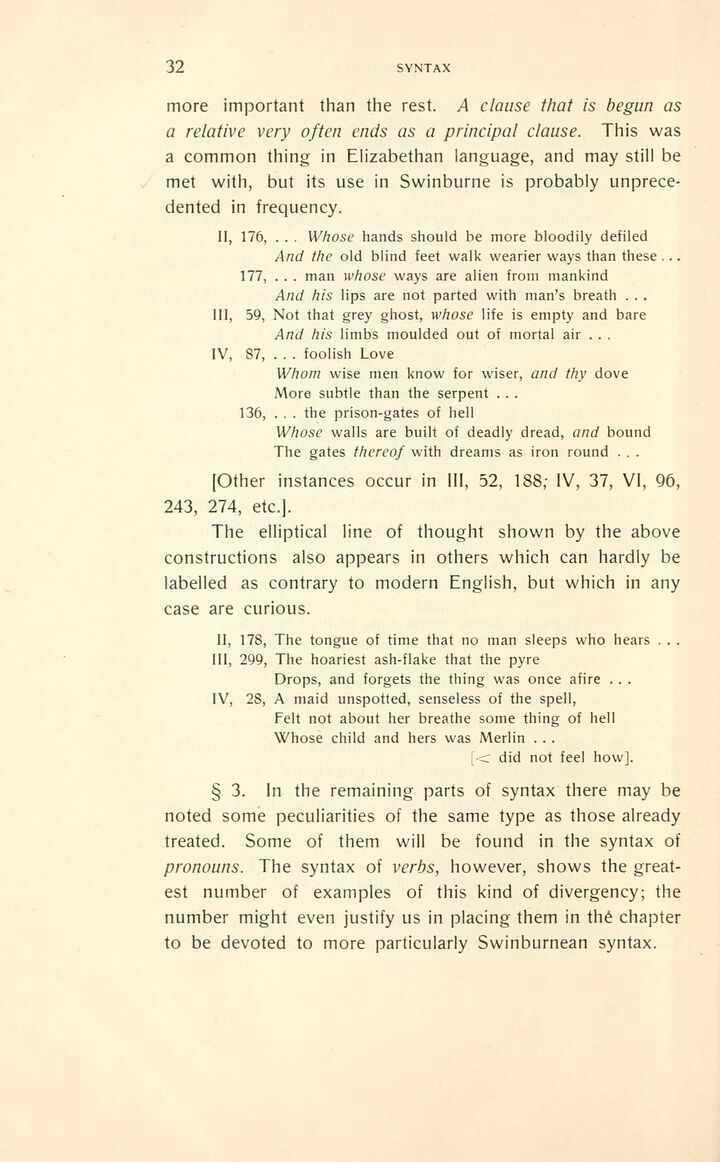
Full resolution (JPEG) - On this page / på denna sida - Sidor ...

<< prev. page << föreg. sida << >> nästa sida >> next page >>
Below is the raw OCR text
from the above scanned image.
Do you see an error? Proofread the page now!
Här nedan syns maskintolkade texten från faksimilbilden ovan.
Ser du något fel? Korrekturläs sidan nu!
This page has never been proofread. / Denna sida har aldrig korrekturlästs.
32
SYNTAX
more important than the rest. A clause that is begun as
a relative very often ends as a principal clause. This was
a common thing in Elizabethan language, and may still be
met with, but its use in Swinburne is probably
unprecedented in frequency.
II, 176, ... Whose hands should be more bloodily defiled
And the old blind feet walk wearier ways than these ...
177, ... man whose ways are alien from mankind
And his lips are not parted with man’s breath . . .
III, 59, Not that grey ghost, whose life is empty and bare
And his limbs moulded out of mortal air ...
IV, S7, . . . foolish Love
Whom wise men know for wiser, and thy dove
More subtle than the serpent . . .
136, ... the prison-gates of hell
Whose walls are built of deadly dread, and bound
The gates thereof with dreams as iron round . . .
[Other instances occur in III, 52, 188; IV, 37, VI, 96,
243, 274, etc.].
The elliptical line of thought shown by the above
constructions also appears in others which can hardly be
labelled as contrary to modern English, but which in any
case are curious.
II, 178, The tongue of time that no man sleeps who hears . . .
III, 299, The hoariest ash-flake that the pyre
Drops, and forgets the thing was once afire . . .
IV, 28, A maid unspotted, senseless of the spell,
Felt not about her breathe some thing of hell
Whose child and hers was Merlin . . .
[< did not feel how].
§ 3. In the remaining parts of syntax there may be
noted some peculiarities of the same type as those already
treated. Some of them will be found in the syntax of
pronouns. The syntax of verbs, however, shows the
greatest number of examples of this kind of divergency; the
number might even justify us in placing them in th£ chapter
to be devoted to more particularly Swinburnean syntax.
<< prev. page << föreg. sida << >> nästa sida >> next page >>